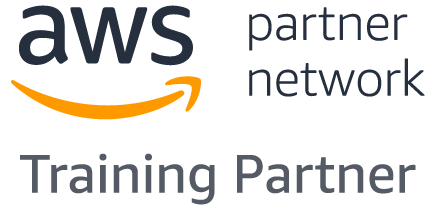Informationstechnologien & IT-Sicherheit
Running Containers on Amazon Elastic Kubernetes Service (EKS)
- Seminar
- Präsenz / Virtual Classroom
- 5 Termine verfügbar
- 24 Unterrichtseinheiten
- Teilnahmebescheinigung
- Online durchführbar
Seminarnummer: 26030
Container und Kubernetes effektiv genutzt. Auch geeignet für VMware Nutzer:innen.
Erfahren Sie, wie Sie Kubernetes-as-a-Service effizient auf Amazon Web Service (AWS) betreiben. Der Kurs bietet einen kompletten Einstieg mit praktischen Übungen für Amazon EKS.
Nutzen
- Architekturentscheidungen für EKS nach den Kriterien Kosten, Effizienz und Belastbarkeit treffen
- Aufbau eines Amazon EKS-Clusters durch Auswahl der richtigen Compute-Ressourcen zur Unterstützung von Worker-Knoten
- Automatisieren und Bereitstellen der Anwendungen im Cluster
- Kommandozeileninterface sowie Infrastructure as Code
- Integration mit AWS Diensten wie IAM, EC2, Fargate und XRay
Zielgruppe
Dieser Kurs ist konzipiert für Cloud Jobrollen, die das Management der Container-Orchestrierung EKS verantworten, einschließlich
- Cloud Architekt:innen
- DevOps-Engineers
- System Administrator:innen
Anforderungen
Wir empfehlen, dass die Teilnehmer:innen an diesem Kurs die folgenden Voraussetzungen erfüllen:
- Absolvierung des Online Kurses Amazon Elastic Kubernetes Service (EKS) Primer
- Absolvierung AWS Cloud Practitioner Essentials (oder vergleichbare in der Praxis erworbene Kenntnisse)
- Basiskenntnisse in Linux Systemverwaltung
- Basiskenntnisse in Netzwerk-Verwaltung
- Basiskenntnisse in Container- und Microservices
Inhalte
Module 1: Container Fundamentals
Module 2: Kubernetes Fundamentals
Module 3: Amazon EKS Fundamentals
Module 4: Building an Amazon EKS Cluster
Module 5: Deploying Applications to Your Amazon EKS Cluster
Module 6: Architecting on Amazon EKS - Part 1: Observe and Optimize
Module 7: Architecting on Amazon EKS - Part 2: Balancing Efficiency, Resiliency, and Cost
Module 8: Managing Networking in Amazon EKS
Module 9: Securing Amazon EKS Clusters
Module 10: Managing Upgrades in Amazon EKS
- Design principles for building applications
- What are containers?
- Components of a container
- Writing Dockerfiles
Module 2: Kubernetes Fundamentals
- Challenges of managing many containers
- What is Kubernetes, and why is it important?
- Components of the Kubernetes control plane
- Kubernetes worker nodes and pods
- Key Kubernetes objects
- Managing Kubernetes with kubectl
Module 3: Amazon EKS Fundamentals
- How Amazon EKS manages the Kubernetes control plane
- Fundamentals of Amazon EKS security
- Use cases for extending Amazon EKS to the data plane
- Running worker nodes on managed node groups
- Running containers on AWS Fargate with Amazon EKS
- Amazon EKS tasks versus Kubernetes tasks
Module 4: Building an Amazon EKS Cluster
- Visual review of the Amazon EKS architecture to be built in labs
- IAM authentication
- Amazon VPC and AWS networking fundamentals
- Different methods to create a cluster
- High-level steps in cluster creation
- Function of eksctl
- Preparing for labs: Review the lab activities for the course
Module 5: Deploying Applications to Your Amazon EKS Cluster
- Publishing container images to Amazon ECR
- Deploying applications with Helm
- Continuous deployment in Amazon EKS
- GitOps and Amazon EKS
Module 6: Architecting on Amazon EKS - Part 1: Observe and Optimize
- Configuring observability in an Amazon EKS cluster
- Collecting metrics
- Using metrics to automatically scale EC2 Auto Scaling groups
- Managing logs
- Application tracing in Amazon EKS
- Gaining and applying insight from observability
Module 7: Architecting on Amazon EKS - Part 2: Balancing Efficiency, Resiliency, and Cost
- Optimizing your Amazon EKS application architecture
- Relationship between cost, efficiency, and resilience
- Anatomy of an Amazon EKS cluster from a cost perspective
- Using tagging with pod placement for cost accountability
- Sizing containers and worker nodes efficiently
Module 8: Managing Networking in Amazon EKS
- Review: VPC fundamentals
- The importance of major communication components
- Communication flow in a noncontainerized architecture
- Challenges of network communication in Kubernetes
- Comparing the Docker communication solution with the Kubernetes model
- How Amazon EKS and Amazon VPC simplify inter-node communications
- Managing pod communication in Amazon EKS
- The relationship between communications and scalability
- Running worker nodes in a subnet not associated with the cluster
- Managing service name resolution
- Using a service mesh with Amazon EKS
- Configuring AWS App Mesh
Module 9: Securing Amazon EKS Clusters
- How IAM integrates with Kubernetes Role Based Access Control (RBAC)
- Managing cluster endpoint access control
- Auditing access with AWS CloudTrail logs
- Mitigating security risks during the build of a container image
- Securing network communications
- Managing secrets
Module 10: Managing Upgrades in Amazon EKS
- Contrasting Kubernetes version updates and Amazon EKS platform version updates
- Upgrading your Kubernetes version
- Upgrading your Amazon EKS version
- Maintaining your third-party applications


